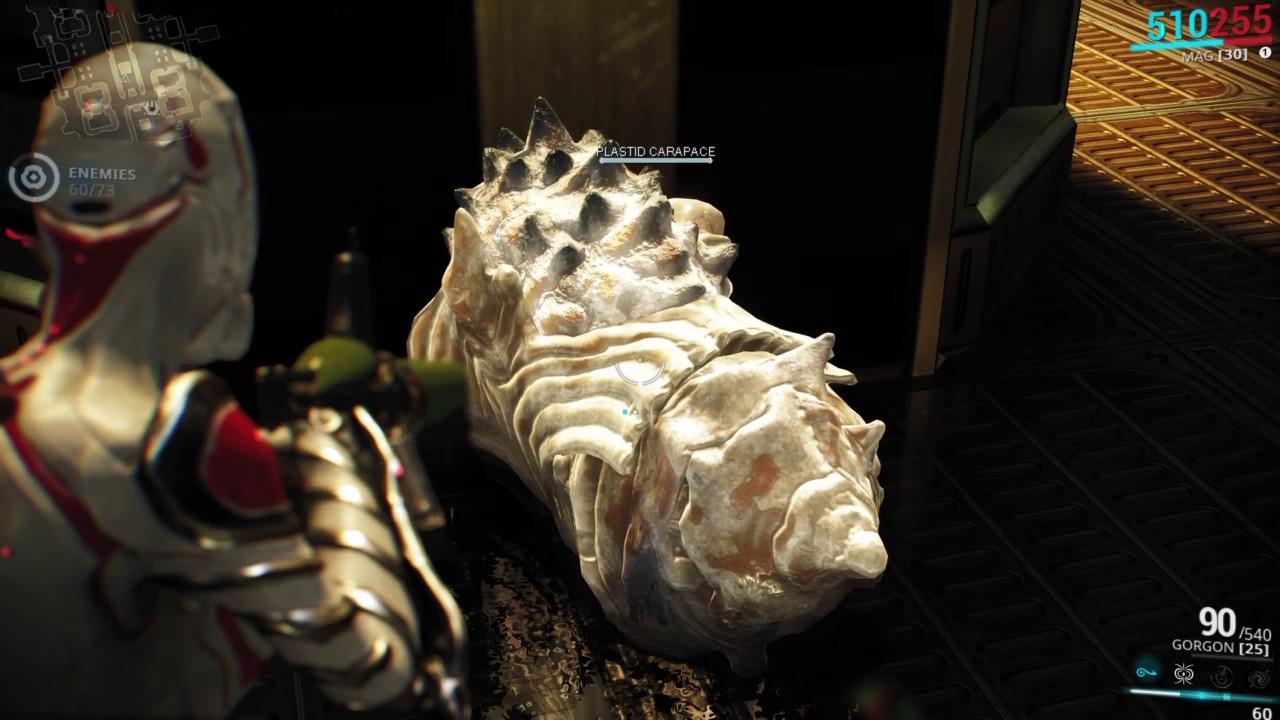Where to find plastids in Warframe
Our guide will help new players learn where to find this valuable resource for building new warframes.

If you're new to Warframe, knowing where to find the dozens of resources needed to build new frames and weapons is half of the challenge—especially when it comes to plastids. This uncommon resource is used in several systems blueprints for various frames, which makes farming them a necessity. But where can a new player find them?
Warframe’s various resources are tied to specific planetoids and events. In the case of plastids, you’ll mostly find them on Phobos, Saturn, Uranus, Pluto, and Eris. And like most materials, they can drop from both enemies and in-level containers. They're also a key component for building your Railjack in the Warframe Rising Tide quest. One of the other resources is Warframe Cubic Diodes, an item added to the game in late-2019's Rising Tide update
For brand new players, Phobos will be the first place you can find plastids though their drop rate is minimal. Keep a keen eye out for the plastid carapaces that can sometimes be found on Phobos missions. If you're having trouble with higher-level zones like Saturn and are trying to grind plastids to build a stronger warframe, like the indomitable Rhino, you'll want to scour these levels carefully.
If you're capable of handling missions on Saturn, Uranus, Pluto and Eris, however, farming plastids becomes much easier. Mission types like defense and survival will bombard you with endless waves of enemies. This typically makes them the best type of mission for resource gathering, since everyone you kill is another chance to earn the material you want. The longer you stick around, the greater those chances increase—along with the quality of rewards you earn in the meantime.
That’s why the Piscinas, Saturn is such a good place to farm plastids. Not only is it a mid-level survival mission, available to wide swathe of players. It sports the Infested faction. These typically spawn in much larger, more predictable swarms of foes than other groups. Piscinas is also what used to be called a "Dark Sector." In the past, these locations were warred over between player factions for certain bonuses. That PVP system is gone, but the bonus XP and drop rates it provided remain.
Location isn’t the only factor, though. A number of mods and companions can increase the odds of finding what you need, or at least relieve the tedium of collecting them, once you get where you’re going.
The Smeeta breed of Kavat, for instance, comes with the Charm mod. This periodically triggers an effect which might double your loot for two minutes. Then there’s the more common Scavenge mod. This will give your Kavat or Kubrow a percentage chance to open otherwise locked lockers on any mission—any of which might contain your preferred mineral.
The biggest gaming news, reviews and hardware deals
Keep up to date with the most important stories and the best deals, as picked by the PC Gamer team.
And finally, the Carrier brand of Sentinel can equip the Looter mod. The item’s resulting shock wave will save you the trouble of destroying secure crates by blowing them up for you. How nice. Of course, all Sentinels can also equip the Vacuum mod, which might just be the most useful mod of all. This handy little tool sucks up any loot you approach automatically—which mostly eliminates the risk of sprinting right past whatever resources you’re looking for without seeing them.
Finally, one last option is to set up a Titan Extractor on Uranus, which will farm plastids (and a few other resources) passively in real time. You'll need to beat every mission on Uranus first, but once you do you can purchase a Titan Extractor blueprint from the market and set it up using the Star Chart map. All you'll need to do is keep an eye on its health and wait four hours for it to complete a harvesting cycle and you'll have a good deal of plastids to use.

